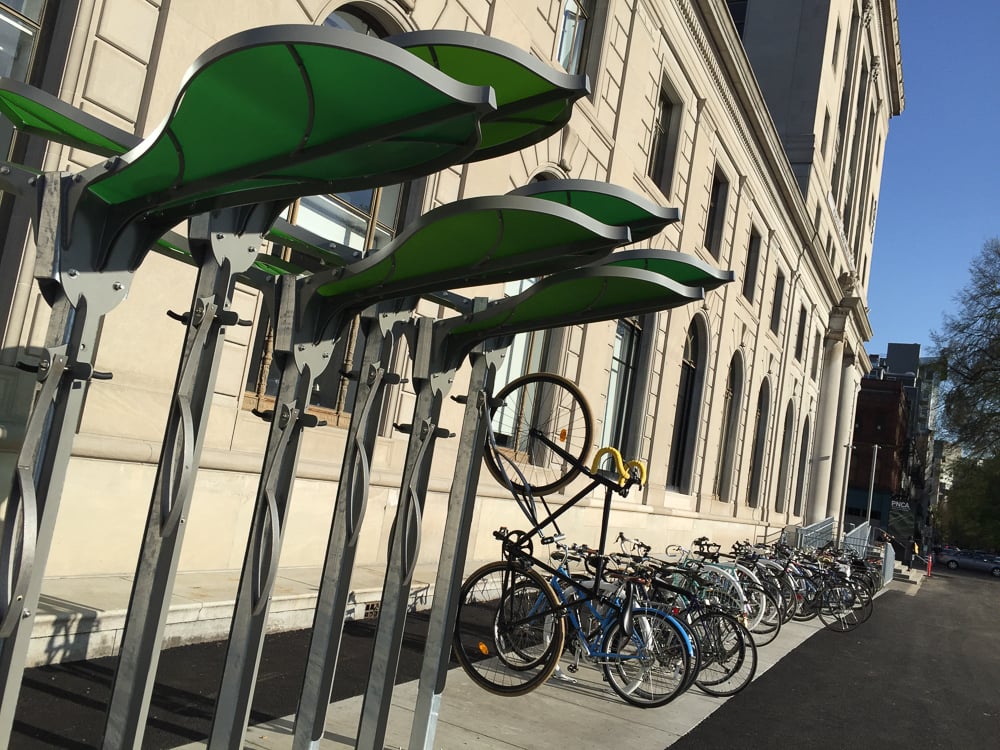Art World
Pacific Northwest College of Art Cancels an MA Program Days Before Classes
Insiders report an atmosphere rife with distrust.
Insiders report an atmosphere rife with distrust.
Brian Boucher

A century-old West Coast art school is in turmoil over the last-minute cancellation of a master’s degree program amid ongoing protests by students and faculty.
Students who had planned to attend the Pacific Northwest College of Art (PNCA), in Portland, Oregon, were surprised to receive emails, just days before the August 29 start of the school year, informing them that the school was suspending the MA in critical theory and creative research (CT+CR) for the 2016–17 year.
The move comes amid major changes at the school, which paints a sunny picture, claiming to have doubled its student body and faculty over the last decade while starting a half-dozen new graduate programs with a major grant and moving into a new building. Insiders, though, speaking to artnet News on background, portray a school rife with distrust between administrators and faculty.
The upheaval at PNCA follows on the heels of disruption at several art schools nationwide, including the merger of the Corcoran School of Art, in Washington, DC, into George Washington University; an attorney general’s investigation of the Cooper Union in New York, which began charging tuition after more than a century of full scholarships; and the departure in protest of an entire class of MFA students at the Roski School of Art and Design at the University of Southern California.
Seattle-area artist Mark Tracy, a member of the incoming cohort, had spent about $7,000 and countless hours finding a place to live and moving to Portland, he told artnet News by phone.
Anne-Marie Oliver headed up the MA in critical theory and creative research (CT+CR) program along with Barry Sanders. Both had taught at the school for the better part of a decade, and had run the program, which they established, since 2008, they told artnet News by phone.
Oliver’s and Sanders’s contract had expired, but when an interim head of the program departed in spring without having recruited a full class for the 2016–17 year, they entered into a one-year contract to recruit a group of 15 students as soon as possible.

Bike parking at the new Pacific Northwest College of Art building. Photo Bike Portland, via Flickr.
Oliver and Sanders tell artnet News they had recruited a full cohort of 17 students; the school says only five had actually enrolled and made deposits. Oliver and Sanders maintain that the suspension of the program is all part of a coordinated effort by the school to turn their one-year program, created as such to make it relatively affordable, into a more lucrative two-year program.
“PNCA had been in a tough budget situation to begin with, and the program was going to run at a loss,” president Don Tuski told artnet News in a phone conversation. “Because there weren’t going to be enough students, I had to make a difficult decision.” Tuski had arrived as the school’s new president just weeks previously, after a tenure at the Maine College of Art, after the departure of the previous president, Tom Manley, who is now head of Ohio’s Antioch College.
Tuski puts the problem down partly to the school’s having just moved to a new building; the school relocated to a refurbished post office building in 2015, supported by a $15 million capital campaign.
“The overhead costs of the move into a new building required us to raise enrollment goal to about 550 or 600 from its current 500, and so I’m here to build enrollment,” Tuski said. “When the school moved to a bigger building, enrollment didn’t follow suit fast enough. I didn’t want to have to make this decision but I had to demonstrate fiscal responsibility.”
The calls for fiscal responsibility ring hollow to some of the faculty, who feel they have been the ones getting the squeeze. The latest uproar follows protests by students and faculty this past spring, over what they called the abrupt discontinuation of the employment of many adjunct faculty. They complained of rising pay for school executives while adjunct faculty members scrape to get by, and Ellen Lesperance, who teaches at the school and has participated in the protests, points out that adjunct instructors represent about three-quarters of the school’s faculty.
Faced with those complaints, Tuski saw increased tuition income as the answer: “I take that very seriously,” he said. “We need another 50 to 100 students, and that will help solve that problem.”
The CT+CR program, though, was one of no fewer than a half-dozen new graduate programs initiated at PNCA in the last several years. In 2007, the school received a grant of $15 million from the Ford Foundation to found no fewer than six graduate programs: an MFA in visual studies, an MFA in collaborative design, a low-residency MFA in visual studies, an MFA in print media, an MFA in applied craft and design (offered jointly with Oregon College of Art and Craft), and an MA in critical theory and creative research (CT+CR). Graduate programs are, several art educators told artnet News, seen as cash cows for struggling schools.
Students have created an online petition calling on the school’s president to reinstate the program.
“This has been devastating,” Mark Tracy told artnet News, “As for enrolling in an MFA, why do that here when I could have gone to other programs without going to such trouble and expense?”